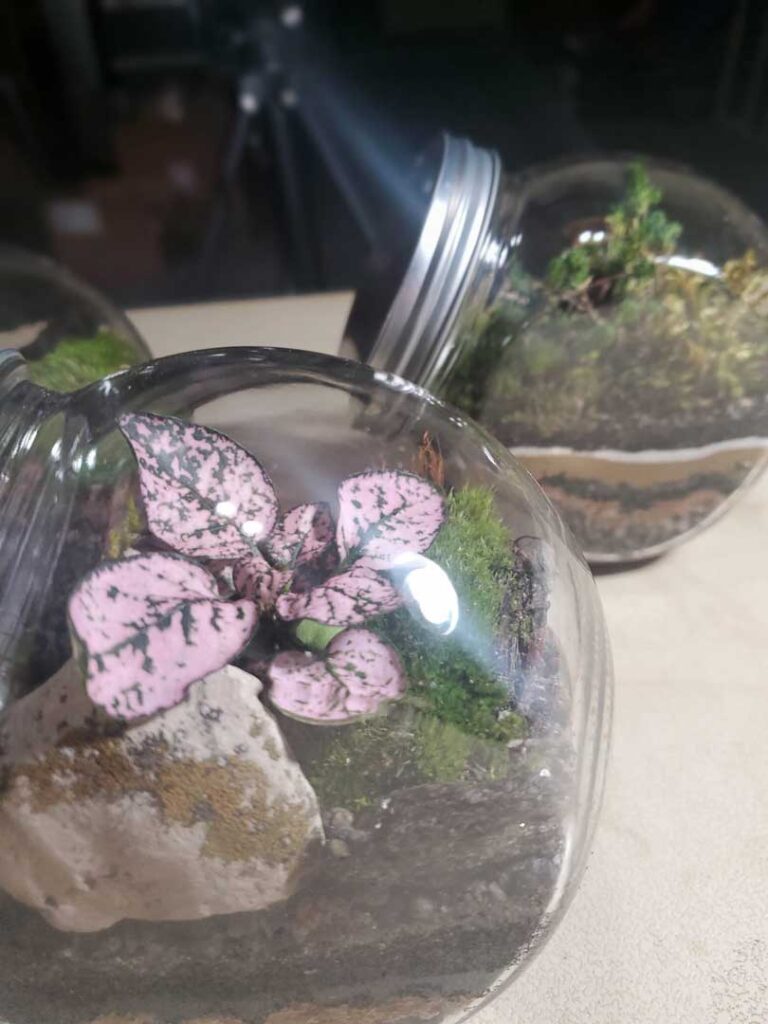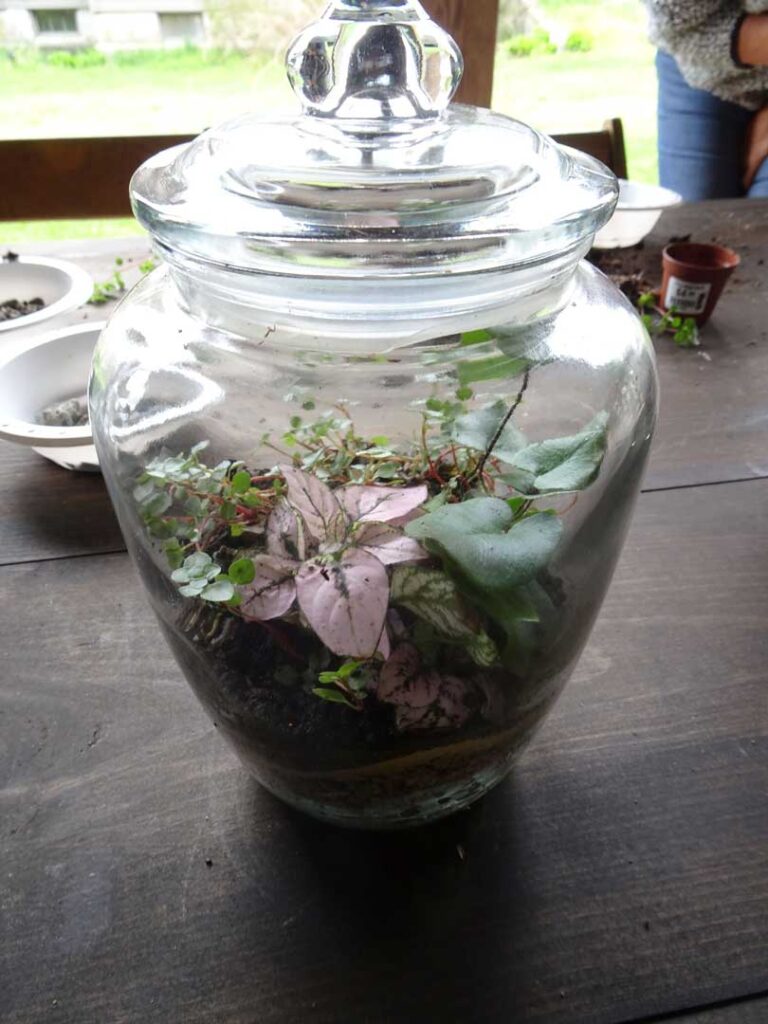Classes
For over a dozen years I’ve offered informal presentations on a number of subjects for adult learning annexes, public libraries and other venues in the NYC area and beyond. My classes—which generally last 1.5 – 3 hours—involve a slideshow presentation and sometimes a participatory element, such as with my Terrarium and Houseplant Care classes.
If given enough time I can create a class on just about any history or natural science topic pertaining to Western New York. Here are descriptions for some of the classes I’ve taught:

The Woodland Terrarium
With its leafy foliage, creeping moss, and heavy use of stones and other natural features, the Woodland-style is perhaps the quintessential terrarium landscape. Using a container you bring, you’ll make your own terrarium with tools and techniques developed in the 1960s and 1970’s–the Golden Age of terrariums–and perfected over years of practice. Some container choices include: large mason, pickle and candle jars, (large) medicine jars, (small) cookie jars and glass kitchen canisters, or just about any glass container 6 – 10 inches in diameter and at least 8 inches tall tight-fitting lid.

The Desert Terrarium
One of the simplest and easy-to-maintain terrariums is the desert landscape. The cacti and succulents that thrive in dry air and intermittent watering are also some of the most peculiar and dazzling plants found in nature. And while most true terrariums require careful regulation of humidity, desert plants thrive in the driest conditions NYC summers and winters can throw at them. In this three-hour course you’ll make your own desert terrarium inside a container you bring with you, using plants, soil and materials provided by us. With techniques inspired mostly by 70’s illustrations and common sense, you’ll learn how to safely plant a cactus in a tight spot, how to fashion a miniature tumbleweed, and how to layer sand to give your terrarium that Grand Canyon look.
Growing Plants Indoors With Science and Magic
One of the simplest and easy-to-maintain terrariums is the desert landscape. The cacti and succulents that thrive in dry air and intermittent watering are also some of the most peculiar and dazzling plants found in nature. And while most true terrariums require careful regulation of humidity, desert plants thrive in the driest conditions NYC summers and winters can throw at them. In this three-hour course you’ll make your own desert terrarium inside a container you bring with you, using plants, soil and materials provided by us. With techniques inspired mostly by 70’s illustrations and common sense, you’ll learn how to safely plant a cactus in a tight spot, how to fashion a miniature tumbleweed, and how to layer sand to give your terrarium that Grand Canyon look.
Houseplant Propagation Techniques
So you’ve learned how to make your houseplants survive and thrive. Now you’re ready to make many out of one to expand your collections and spread the joy of indoor gardening to your friends and family! In this class you’ll learn several methods to multiply your plants depending on their basic structure and the conditions they are growing in. Participants will plant seeds and leaf cuttings to take home. While this class is meant as a companion to the “Growing Plants Indoors” class, it is by no means a necessary prerequisite.
Houseplant Propagation Techniques
Using native plants in your garden as opposed to imported ones promotes sustainability, protects indigenous wildlife–and they are ideally suited for the climate you live in. Many imported varieties of plants can spread beyond your garden and displace native species, and some are even highly poisonous to animals and people. In this class we’ll learn to identify beneficial flower, tree and ground-cover varieties of plants (and some non-beneficial ones), as well as the imported plants that can–and in many cases already do–negatively impact the environment, and how we can do our part to mitigate and eradicate invasive species wherever possible.